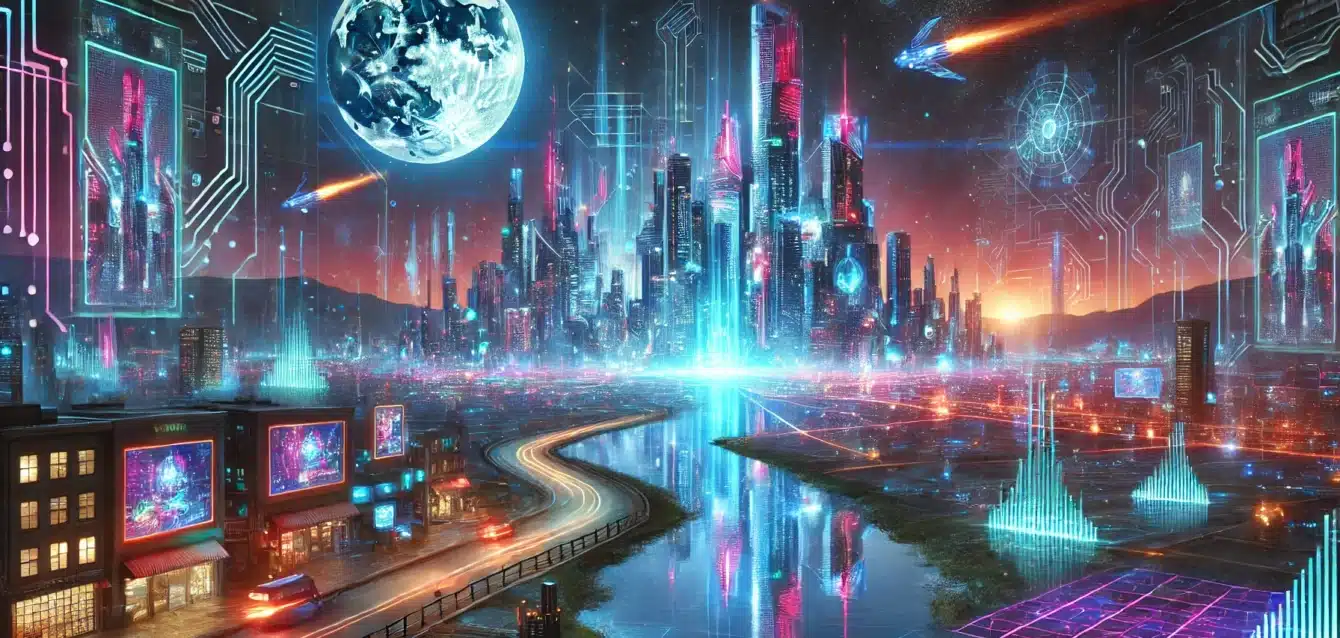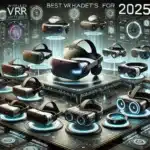Welcome to the World of Virtual Reality
I bet you never believed that technology would come this far, allowing you to see the world the way you want, don’t you get it? Imagine taking a step into a fully converted digital universe, where there is a thin line between virtual reality and the real world. But guess what? With Virtual reality service, you can now give life to your dreams, think, and watch yourself how things can turn out the way you want. From exploring ancient civilizations to simulating life-saving surgeries. VR development is reshaping the way we experiment with the world.
This article breaks down virtual reality and its future, helping you understand how it works or came into being.
Dive in, and let’s go through the boundless possibilities of virtual reality.
What is Virtual Reality?
Virtual reality development services are an advanced technology that allows customers to interact and feel the environment in a way that feels real. Incorporated with specialized hardware, like VR headsets, controllers, and sensors. It fosters a creative experience that tricks the brain into perceiving the digital environment as real.
Definition of Virtual Reality
VR development is a blend of hardware and software that allows users to take steps in computer-generated 3D environments. Unlike watching a movie or playing a game on a screen, the only difference is that it feels real. VR makes you an active participant, allowing you to look, move and interact as though you are a part of the virtual world.
The History and Evolution of Virtual Development
You must be wondering how this wonderful technology came into being and what made it as fascinating as the technology itself.
- The Early Days: (1960s -1970s)
It was the first-ever development designed by Ivan Sutherland, who developed the first head-mounted display in 1968. Nicknamed the ‘Sword of Diamonds’ it was bulky and tethered, but it was the first-ever introduction of immersive technology.
- The Rise of Commercial VR: (1980s- 1990s)
Although Virtual reality came into being in 1968, it was popularized in 1980 by Jaron Lanier. He founded VPL Research, who crafted one of the first VR systems. Nasa also worked on VR for simulation, showing its potential beyond entertainment.
- Modern Era of Virtual Development (2000s)
The affordable headsets, Oculus Rift, in 2012 made VR accessible to consumers. In recent years, advancements in AI, 5G and computing power are driving VR creativity further.
How Virtual Reality Works
Virtual reality functions through sensors and controller components.
- VR Headsets:
It is called the central part of VR hardware. Incorporated with stereoscopic displays that create the illusion of depth and control the user’s view in the virtual world.
- Controllers and Sensors:
These devices capture body and head movements to make the experience interactive. Advanced sensors like accelerometers and gyroscopes ensure smoothness.
- Motion Tracking System:
This setup includes external cameras or sensors to monitor positional tracking.
- Software Components:
3D Rendering Engines, Shows realistic environments in real-time.
- Simulators and Applications:
Offers rules of the environment, ensuring that user’s actions have opposite effects. For instance, opening a door or moving an object.
Benefits of Virtual Reality
Advanced Learning and Training:
- VR brings textbooks to life. Now, it is possible for students to explore historical events, journey through the human body, or can also travel to outer space- all in a virtual setting.
- Virtual reality has reshaped gaming by creating smooth, interactive environments where players feel like they are in the game themselves.
- Users can function in movies and virtual concerts, allowing the audience to step into the action and fostering memorable experiences.
- For therapy and rehabilitation, VR is used for physical rehabilitation, pain management and exposure theory to monitor phobia and PTSD.
- It is possible for surgeons and medical students to practice procedures in realistic Virtual reality environments, enabling them to treat real patients.
- To increase leads and customers, brands use virtual reality to create unique customer experiences, for instance, virtual stores or smooth product demos.
- Real estate agents utilize VR to offer virtual property tours, allowing clients to explore homes without being physically present.
What Future Virtual Reality Services Hold?
Virtual reality transformed reality, allowing users to see their dreams becoming a reality. Showcase their products in 3D structure, take a tour of a hotel and rooms, and make decisions accordingly.
Integration with Other Technologies:
- AI and Machine Learning: Over the years AI will become more advanced and more intelligent with personalized environments and interactions.
- 5G Connectivity: Networks will capture more speed through VR, the experience will become smoother and more accessible even on mobile devices.
Final Verdict:
Virtual reality services aren’t just a common service available in this era; it is a novelty. A powerful tool with far-reaching technologies for productivity, healthcare, and entertainment. AS technology takes the initiative to modify, VR is there to change the way we interact with the digital and physical world. For more information, you can explore VR Devices and Hardware to learn technical details.





